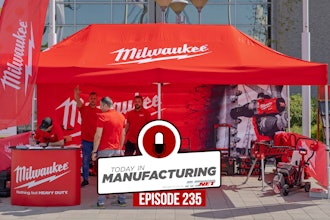This article first appeared in Food Manufacturing's September 2014 print edition.
Although they are rarely recognized as such, most food manufacturers and suppliers have two completely separate operational excellence initiatives. They have a food safety program administered by the quality assurance department — regarded by company executives as a “cost of doing business” or brand insurance policy — that’s tasked with achieving and maintaining various quality certifications. And they have a self-funding lean or Six-Sigma-based continuous improvement (CI) program that’s primarily focused on cost containment.
By uniting these two efforts, we believe that food safety programs can provide customers with certification assurances while building a culture of process discipline, continuous improvement and employee engagement. While it will not address all certification criteria (e.g., GMO, allergens, and recall procedures), combining food safety and operational excellence initiatives will increase organizational flexibility, provide standardized practices and documentation and reduce operating costs.
For example, a Hazard Analysis and Critical Control Point (HACCP) program utilizing lean tools will reinforce the discipline and documentation required for food safety process certification. Relevant tools include standard work, 5S (organization and housekeeping), and total productive maintenance (TPM).
Standard work: Coupled with layered audits and uniform training across shifts, standard work helps ensure that employees follow designated procedures. When standard work is combined with Kaizen events, improved standard cleaning procedures can be introduced and sustained, increasing the effectiveness and efficiency of cleaning processes associated with product changeovers and line startups.
5S (sort, straighten, shine, standardize, sustain): A good 5S program will reduce the daily time required to find and use cleaning and inspection supplies and equipment. It will provide ongoing documented audits and ensure compliance with pest control procedures as they relate to bait station and trap placement and documented inspection and adherence to prescribed cleaning schedules.
Total productive maintenance (TPM): A mature TPM initiative will contribute to “best in class” operating equipment efficiency (OEE) and machine availability. By providing better transparency and documentation of autonomous maintenance and predictive parts replacement, TPM will contribute to high scores in the maintenance and repair section of a food safety audit.
In addition to these areas, all of the food safety standards that follow Global Food Safety Initiative (GFSI) guidelines incorporate customer focus, management knowledge and attention to food safety, and documentation of continuous improvement. Incorporating the discipline of “root cause corrective action” into daily management routines, consumer complaint and machine failure structure can address each of these overriding priorities.
The formal or informal organizational alignment of food manufacturers’ quality assurance and continuous improvement organizations will accelerate the adoption of best practices. Ultimately, a streamlined organization can generate significant customer and shareholder value by combining day-to-day process discipline with data capture and other certification requirements, transforming such efforts from another cost of doing business into a source of strategic advantage.
About the Authors
George Gansner is responsible for the global marketing and business development for IFS Management. He can be reached at [email protected]
Steve Weise is Global Food & Beverage Client Manager for TBM Consulting Group. He can be reached at [email protected]



















